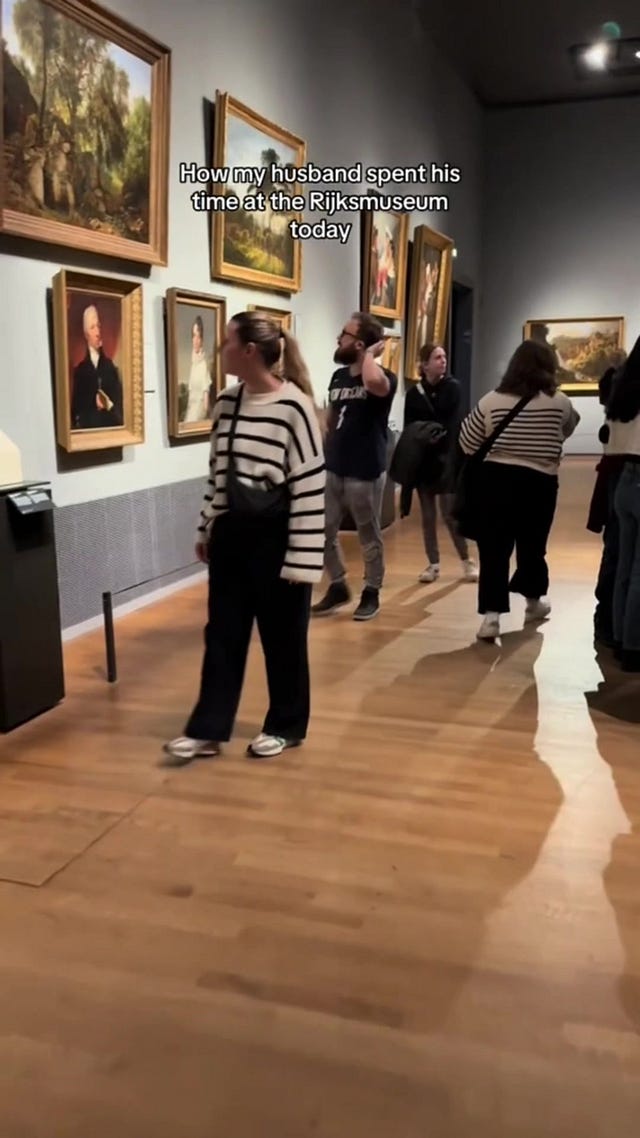I do a LOT of things on the internet and there are a lot of companies who have enough data to pull off a clever Spotify-wrapped type recap of my year. But they don’t.
Spotify Wrapped has become an annual cultural phenomenon because it's not just a summary of your listening habits—it’s a moment of self-reflection served with a generous helping of vanity. Who doesn’t love to learn more about themselves, even if the results are a little cringe? ("Congratulations, you’re in the top 0.5% of Taylor Swift listeners worldwide. Maybe consider some new hobbies?") Wrapped doesn’t just tell you about your year; it gives you the tools to broadcast your personal brand. Are you a Swifty? A podcast bro? A lowkey ASMR junkie? Spotify doesn’t just hand you a recap—it hands you an identity.
But Wrapped is more than a vanity play. It’s a masterclass in audience engagement, tapping into our desire to be known. When Spotify tells you it understands your vibe, it’s building a foundation of trust. If it gets that right, it becomes easier to trust the algorithm to serve you songs you’ll love—even if you’ve never heard them before. That’s where the magic happens: Wrapped isn’t just a look back; it’s a promise that Spotify "gets" you and will keep getting you.
I want to see a retailer do a Spotify Wrapped for me (and everyone I follow on Instagram)
For retailers, this trust is critical. The stakes for a bad recommendation are much higher than with music. Hate a song? Skip it. Hate a sweater? You’re stuck with the hassle of a return and the emotional baggage of wondering if you’ve lost your sense of style. Consumers need to believe that a retailer understands their taste before they’ll let the algorithm take the wheel.
Shopping these days feels a bit like online dating: endless options, no spark, and the creeping suspicion that you’re just an algorithm’s idea of a "good match." Sure, that cashmere sweater might technically check all my boxes, but where’s the romance? Where’s the serendipity? In their quest to predict our every need, retailers have forgotten something essential: shopping should be fun.
We identify ourselves with clothes- let’s put cute names behind these personas
So why aren’t more brands adopting a Wrapped-style approach? Imagine if, instead of generic loyalty points or uninspired "frequently bought together" suggestions, retailers gave customers an entertaining glimpse into their shopping persona. "You bought 14 striped shirts this year—ready to branch out?" or "Congratulations, you’re officially in the Top 10% of our most dedicated denim lovers." It’s playful, but it also invites customers to self-reflect and self-identify within the brand’s ecosystem.
(an aside, but the striped shirt thing is pretty funny)
Better yet, this approach could do double duty as a segmentation tool. A Spotify Wrapped for retail would let customers effectively self-sort into tribes. Are they trend chasers, classicists, or quirky individualists? The more customers reveal about themselves in these playful recaps, the better the brand can tailor future recommendations. It’s a win-win: the customer feels seen, and the retailer gets sharper insights.
It’s a cheap shot for some virality - who doesn’t love engagement
And let’s not overlook the potential for shareability. People don’t just consume Wrapped; they perform it, posting their results for friends and strangers alike. Imagine the viral potential of a fashion brand's version of Wrapped: "Here’s my 2024 Shopping Story! 67% monochrome, 22% impulse buys, 11% regret."
Retailers don’t need to reinvent the wheel to create better audience engagement. They just need to embrace the idea that consumers don’t want to feel like data points—they want to feel like protagonists. Wrapped works because it makes every listener the main character of their story. For brands willing to play along, there’s a huge opportunity to turn shopping into something more than a transaction. It can be a little chaotic, a little surprising, and, above all, fun.
Like what you see? Share with your colleagues!




